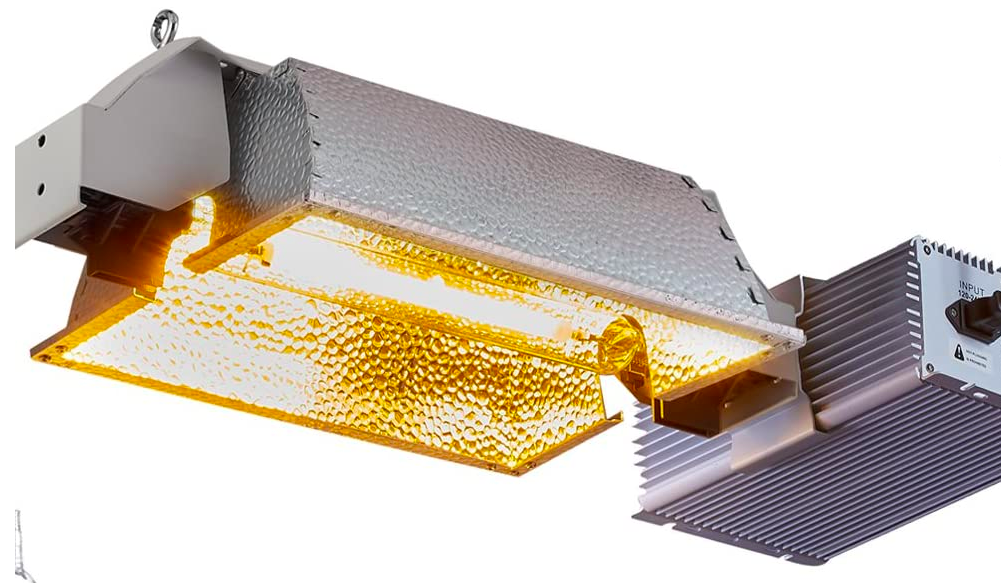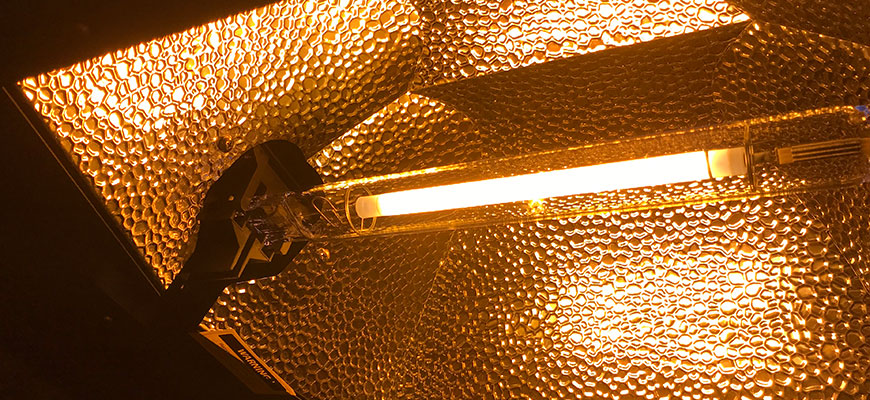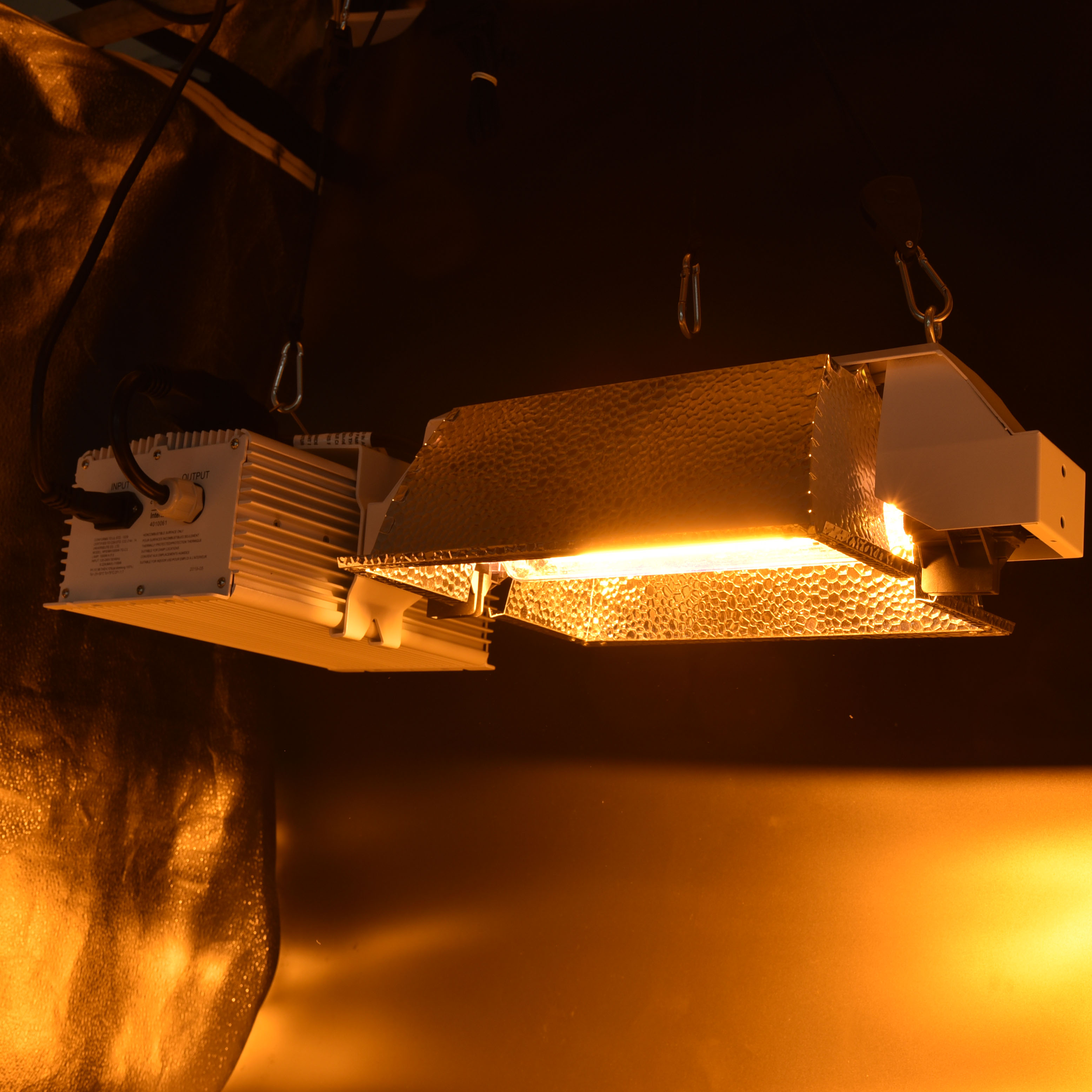What are Double Ended Grow Lights
Double-ended grow lights are a type of horticultural lighting that consists of high-intensity discharge (HID) lamps that have connectors on both ends of the bulb. They are also known as DE grow lights or double-ended HID lights. These lights are changing the way we look at indoor gardening and are quickly becoming a popular choice for growers around the world.
Benefits of Double Ended Grow Lights
One of the most notable benefits of using double-ended grow lights is their stronger light intensity, which is excellent for plants that require intense light during different stages of growth. Unlike single-ended grow lights, DE lights can penetrate deeper into the plant canopy, ensuring that all parts of the plant are receiving adequate light. This leads to stronger and healthier plants with increased plant yields.
Double-ended lights also distribute light more evenly throughout the grow space, ensuring that no part of the plant is neglected. This feature is particularly important when it comes to large-scale and commercial applications where lighting consistency is mandatory to meet the highest quality standards.
Double-ended grow lights have a longer lifespan and slower light bulb degradation than single-ended bulbs. They maintain original intensity throughout their lifespan, meaning growers don't need to replace the bulbs as frequently, saving them time and money.
Another benefit of double-ended lights is that they have lower energy consumption, leading to lower electric bills. This feature alone makes them an excellent choice for growers who want to save on energy costs while producing healthy and high-yielding plants.
Types of Double Ended Grow Lights
By understanding these different options, you can make informed decisions when selecting the most suitable lighting solution for your specific cultivation needs. Whether you are a hobbyist gardener or a professional cultivator, this guide will help you navigate through the diverse range of double ended grow lights available in the market.
High Pressure Sodium (HPS) Bulbs
If you're in the market for a high-quality grow light system for your indoor plants, chances are you've come across double-ended grow lights. These systems are becoming increasingly popular among horticultural enthusiasts, and for good reason. One of the main features of double-ended grow lights is the use of High Pressure Sodium (HPS) bulbs, which are known for their impressive light output and efficiency.
There are several types of HPS bulbs available, each with its own specifications and benefits. Some popular examples include the EYE Hortilux DE HPS 1000W, Agrosun 1000W HPS Double-Ended Bulb, and Ushio Proplus Bulb 600W HPS. These bulbs feature double-ended connectors, which allow for better electrical contact and increased efficiency.
One of the primary benefits of HPS bulbs is their high light intensity. This makes them an excellent choice for promoting plant growth during the flowering and fruiting stages. HPS bulbs emit a strong red-orange light that enhances photosynthesis and can penetrate the plant canopy to reach lower leaves. The result is healthier, more robust plants with higher yields.
Another advantage of HPS bulbs is their efficiency. These bulbs produce more usable light per watt of energy consumed than other types of bulbs. This means that you can achieve the same light intensity with fewer bulbs, leading to lower electric bills and reduced energy consumption.
Metal Halide (MH) Bulbs
Metal Halide (MH) bulbs are one of the most popular types of bulbs used in double ended grow lights for indoor gardening. They emit a bright, white light that is rich in blue spectrum, promoting vegetative growth in plants. MH bulbs are an excellent choice for growing plants in the vegetative stage, and they provide a usable light that is similar to natural sunlight.
There are various types of MH bulbs available in the market that are suitable for different stages of plant growth. One of the most popular is the Lightspeed Pro DE MH 1000W 6500K bulb. This bulb offers a high light output and excellent light quality, making it perfect for the vegetative stage of plant growth. It emits a cool, intense light with a high lumen output and is an excellent choice for commercial applications.
Another popular MH bulb is the Lightspeed DE MH 1000W 6000K Lamp. This bulb is also ideal for the vegetative stage of plant growth, and it offers excellent quality light, which enhances plant yield. It is an energy-efficient bulb that operates at cool temperatures, reducing heat emissions and electric bills.
The Ushio HiLUX GRO™ MH 1000W Bulb is another popular type of MH bulb. It is designed specifically for horticultural lighting and is ideal for the vegetative stage of plant growth. This bulb emits a high-pressure sodium lamp with spectral ratios that are optimized for plant growth. It provides an intense light output and is an excellent choice for plant canopy penetration.
Understanding the Technology Behind Double Ended Grow Lights
These innovative lighting systems are known for their exceptional performance and ability to promote vigorous growth throughout all stages of plant development. To truly appreciate the benefits of double ended grow lights, it is crucial to understand the technology behind them.
Digital Ballasts
Digital ballasts play a critical role in double ended grow light systems. These ballasts are essential components that regulate the voltage and frequency of electricity supplied to the bulbs, thereby ensuring stable light output. This stable light output can lead to better plant yields and canopy formation, making digital ballasts a must-have in any horticultural lighting setup.
Furthermore, these ballasts do not consume excessive energy, which helps in keeping electric bills under control. Digital ballasts come in two types: frequency and electronic ballasts. Both have their unique advantages and disadvantages. However, electronic ballasts are generally more energy-efficient than frequency ballasts.
Light Reflectors and Fixtures
In horticultural lighting, light reflectors and fixtures play an important role in maximizing the benefits of double ended grow lights. These essential components are critical for growers who want to ensure uniform light distribution, improved intensity, and light penetration deep into the plant canopy.
Reflectors are designed to reflect and redirect the light emitted by a double-ended grow light. They are available in various styles, including air-cooled hoods and adjustable wings, each with unique features that enhance the intensity and spread of light for plants.
Air-cooled hoods use fans or ducts to facilitate the exchange of hot air for cool air, which helps to keep temperatures in the growing area at ideal levels and reduces heat emission. Adjustable wings, on the other hand, allow growers to modify the angle of the reflector, which in turn changes the distribution of light, ensuring that it covers a wide area and penetrates deep into the plant canopy.
How to Choose a Double Ended Grow Light System for Your Gardening Needs
From understanding the benefits of double-ended lights to evaluating important factors like light intensity, quality, and energy consumption, we'll give you all the information you need to make an informed decision. Let's get started!
Intensity and Lumen Output
Double-ended grow lights are a popular choice among horticulturists and indoor gardeners due to their high intensity and lumen output. The intensity of light is measured in PAR (photosynthetically active radiation) or PPFD (photosynthetic photon flux density), whereas lumen output measures the amount of visible light emitted from the bulb.
Intense light is essential for the growth and development of plants as they require a specific amount of light to carry out the process of photosynthesis effectively. A higher intensity of light results in increased plant yields and improved plant growth. Factors such as plant type, growth stage, and the size of the plant canopy play a vital role in determining the optimal intensity and lumen output required for healthy growth.
It is crucial to choose the right intensity and lumen output for your gardening needs for achieving optimal plant growth. As a rule of thumb, high-pressure sodium (HPS) bulbs are recommended for the flowering stage of plants, whereas metal halide (MH) bulbs are best for the vegetative phase of growth.
Usable Light, Ultraviolet Light, and Blue Light Levels
When it comes to indoor horticultural lighting, usable light spectrum, ultraviolet light, and blue light levels are crucial factors that directly affect plant growth, photosynthesis, and overall plant health. Double-ended grow lights (DE), also known as high-pressure sodium lamps, have become increasingly popular among commercial and indoor gardeners due to their intense light output and excellent quality.
Usable light refers to the wavelengths of light that plants can absorb and use to fuel their growth and development. Ultraviolet light, or UV, and blue light spectra are essential in promoting photosynthesis and stimulating vegetative growth phases. DE bulbs offer high light intensity, which encourages plant tissue development and increases plant growth rates.
Plant health and overall quality can also be attributed to the light spectrum. Ultraviolet light aids in improving plant resistance to diseases and pests, while blue light helps regulate plant development and produces robust vegetation. The intensity of blue light also contributes to the development of a plant's root system, which can improve nutrient uptake and ultimately increase overall yield.
DE bulbs come in various types, and each offers unique light spectrum levels, including red, blue, yellow, and warm white. To choose the appropriate bulb, consider the type of plant you want to grow, its growth phase, and the intensity of light needed. For example, blue light is ideal for vegetative growth phases, while red light is most effective during flowering and fruiting stages.
Energy Consumption and Cool Temperatures
Double-ended grow lights are becoming increasingly popular thanks to their many advantages over single-ended grow lights. One of the biggest benefits is that they are much more energy-efficient, making them an excellent choice for those who are environmentally conscious or who are looking to save on their electric bills.
Compared to single-ended grow lights, double-ended lights can reduce energy consumption by up to 30%, which is a significant amount when you consider the long-term savings. This is due to their use of digital ballasts, which are much more efficient than traditional magnetic ballasts. Digital ballasts generate less heat and can convert almost all of the electricity they use into usable light, making them a popular choice for growers who want to minimize their energy usage.
Another great advantage of double-ended grow lights is that they operate at cooler temperatures compared to single-ended lights. Because they produce less heat, it is easier to manage the temperature in your grow room, which is essential for the health of your plants. This lower heat emission also means that you are less likely to experience problems like high humidity or mold growth, which can be common with single-ended lights.
Maximizing Your Results with Double Ended Grow Lights
If you're looking to maximize your indoor gardening results, double-ended grow lights are an excellent choice. These lights provide intense and usable light output, making them ideal for horticultural lighting. They also offer excellent quality and light penetration, which can lead to greater plant yields and improved plant growth. With their superior light quality and energy-efficient performance, double-ended grow lights are a great investment for any indoor gardener. By utilizing these lights in your setup, you can ensure that your plants receive the necessary light, resulting in a bountiful harvest and healthier plants.











